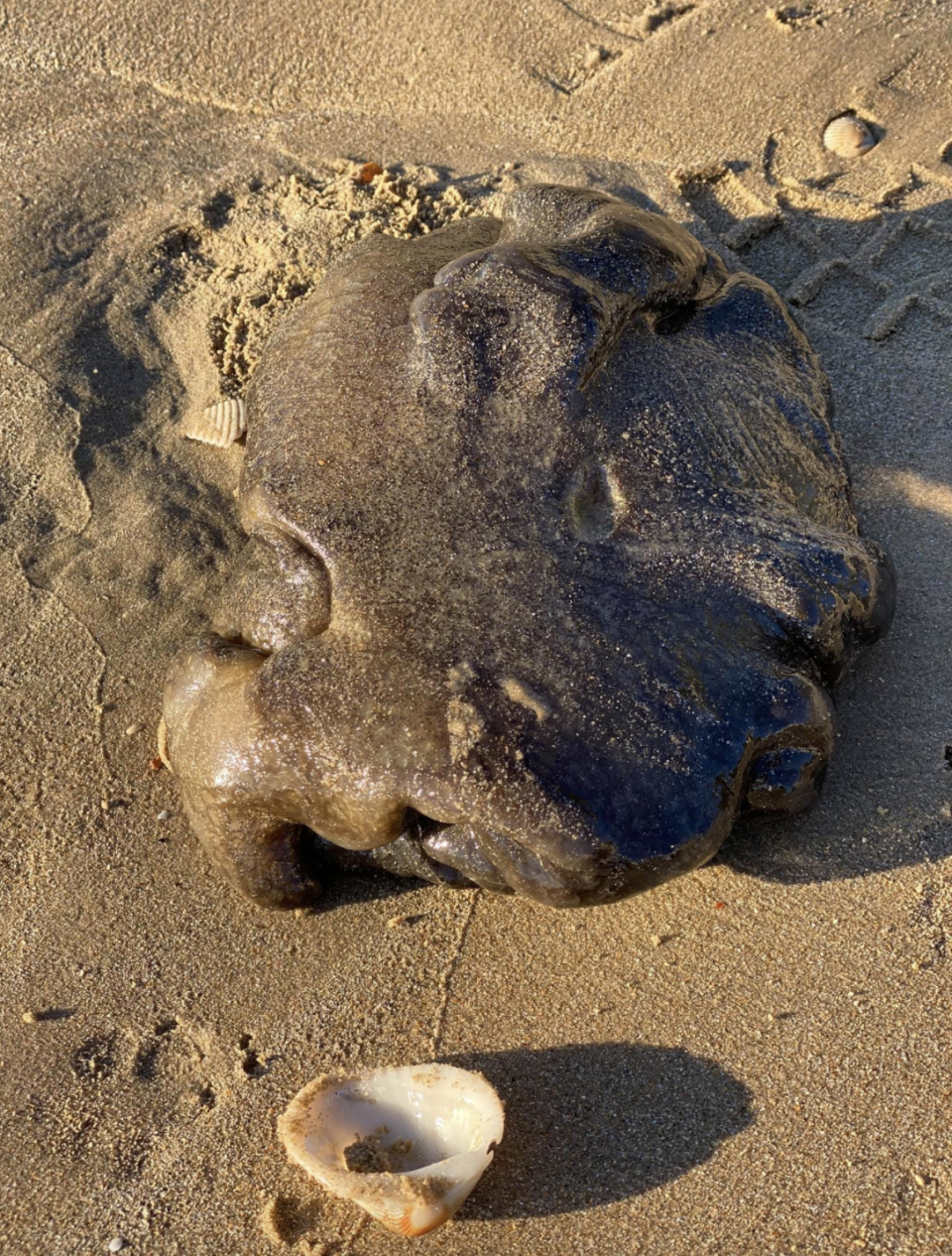'Sure is ugly': Debate rages after mystery sea creature washes up
The discovery of a strange mass washed up on a Queensland beach has left locals puzzled over what the seemingly squishy creature could be.
The bizarre blob was spotted by a local on Urangan Beach in Hervey Bay, in Southern Queensland, on Friday.
The woman who found it asked members of a local Facebook group what they thought it was and whether it could be “a stone fish washed up”.
Her suggestion was quickly quashed, as some pointed out that stone fish had a far rockier exterior than the browning lump she had found, which had a smooth surface.

“That’s not a stonefish... to me it looks like soft coral,” one person wrote in a comment.
“Definitely not a stone fish, but it sure is ugly,” another said.
Others optimistically suggested it could be ambergris - an intestinal slurry ejected by sperm whales which is extremely valuable due to having rare properties used in perfume manufacturing.
“If it’s ambergris it’s worth a lot of money, but I think it’s harder than that looks but sure worth exploring,” one person said.
There were several other interesting suggestions offered by social media users, including the object being shark excrement or part of a whale - either part of its body or its placenta.
Someone said the sight alone was enough to put her off swimming in the ocean for good.
The woman who shared the original post said she had been told by a university teacher it could have been “a colony of sea squirts”.
Expert reveals mystery creature’s true identity
After looking at the photo, Professor Sandie Degnan, from the University’s School of Biological Sciences, said her best guess was a sea pork.
“I do think it’s likely that this is a form of the animal that is commonly referred to as sea pork,” Professor Degnan told Yahoo News Australia.
“It is a kind of sea squirt, related to the cunjevois that many people are familiar with growing on our rocky shores (step on them and they squirt out water; fisherman cut them open to use their guts as fishing bait).
“This particular kind of sea squirt, probably in the genus Aplidium, is actually a colony of hundreds of tiny individual sea squirts, compared to a cunjevoi that is one single, large individual.
“Sea squirts (Tunicates) belong to the phylum Chordata, which is the same group of animals to which we humans belong – of all the animals that we call invertebrates, because they have no back bone, the sea squirts are our closest relatives!”.
Do you have a story tip? Email: newsroomau@yahoonews.com.
You can also follow us on Facebook, Instagram and Twitter and download the Yahoo News app from the App Store or Google Play.


